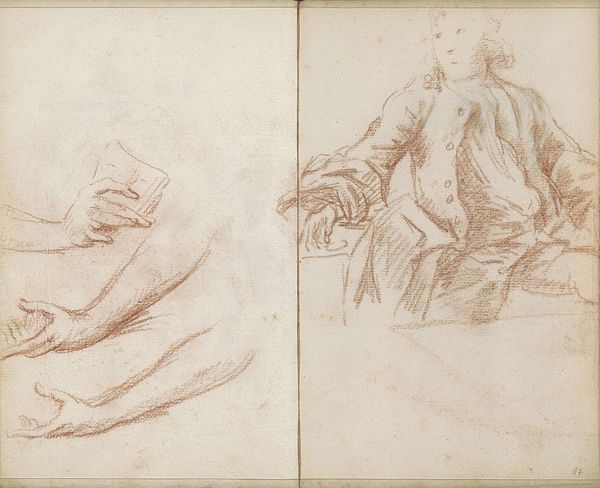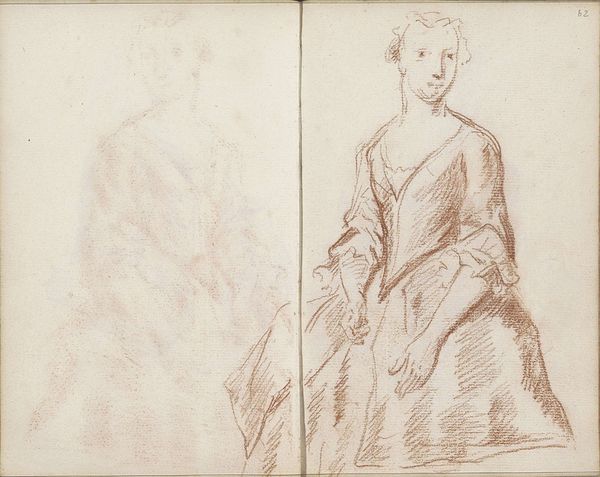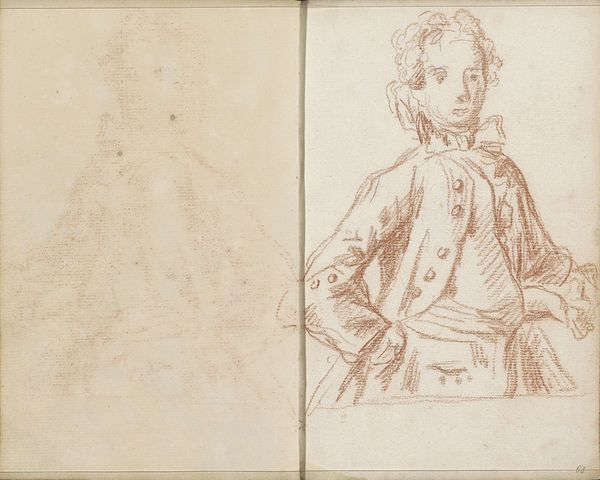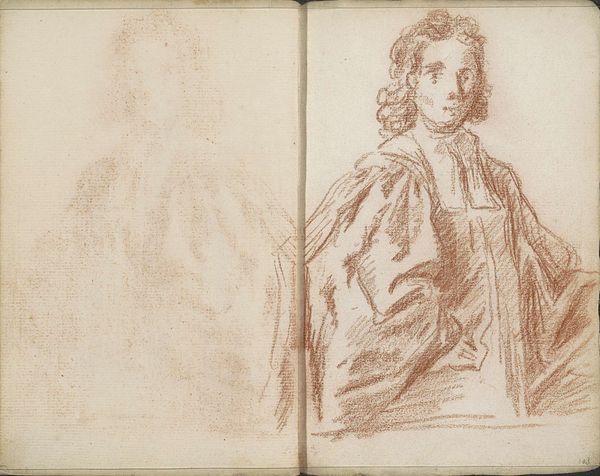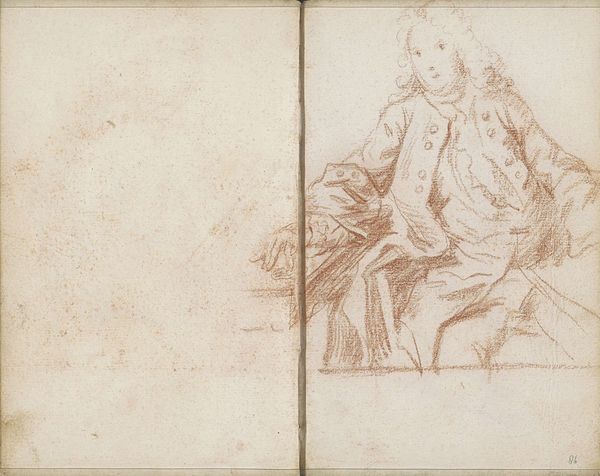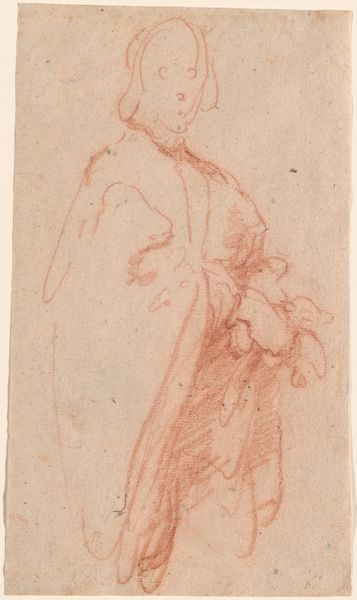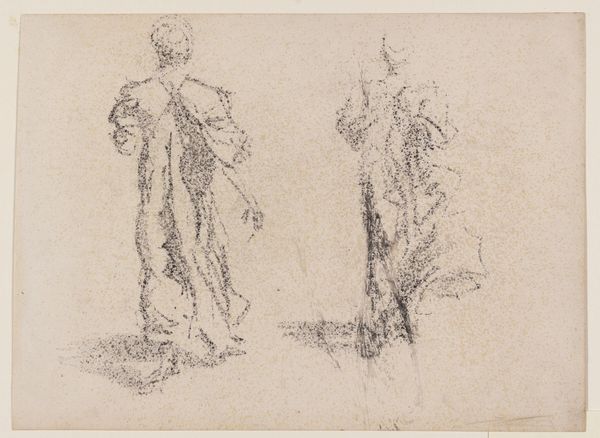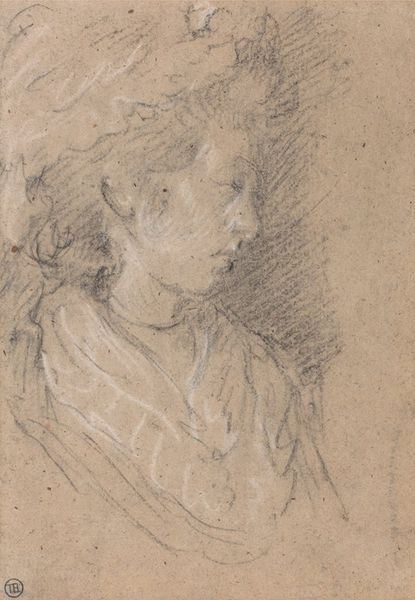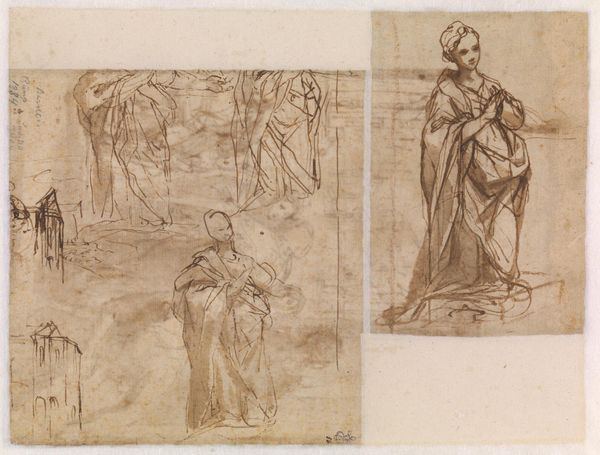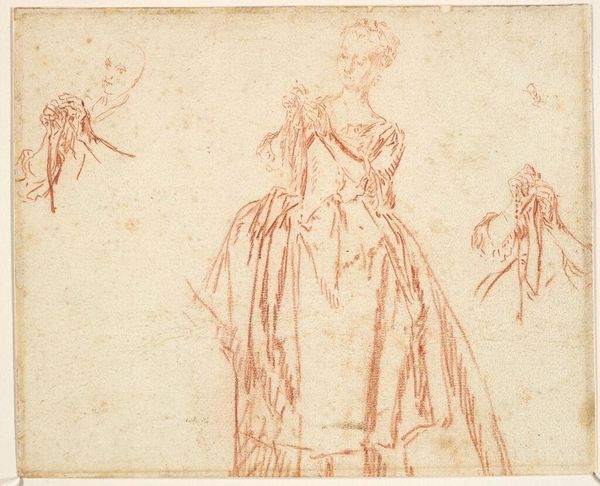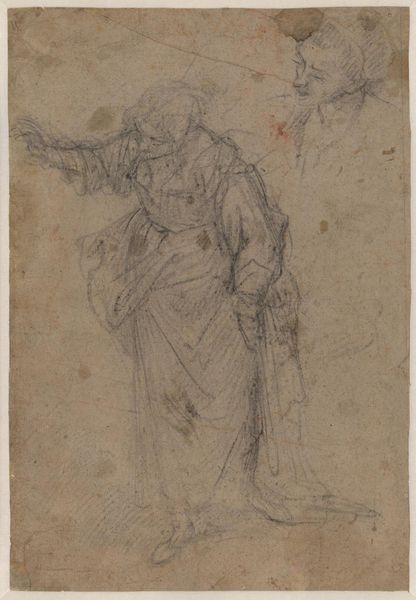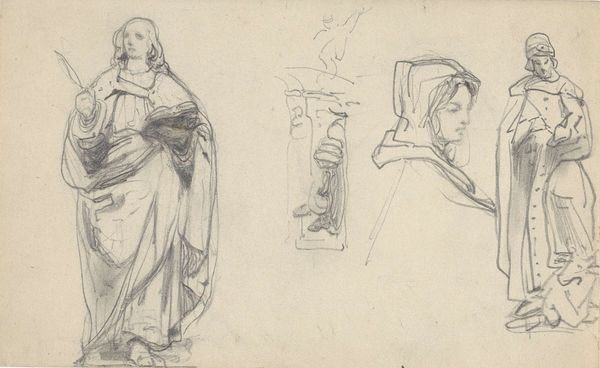
drawing, paper, pencil
#
portrait
#
drawing
#
amateur sketch
#
toned paper
#
light pencil work
#
pen sketch
#
pencil sketch
#
figuration
#
paper
#
personal sketchbook
#
ink drawing experimentation
#
pencil
#
sketchbook drawing
#
sketchbook art
#
fantasy sketch
#
rococo
Copyright: Rijks Museum: Open Domain
Curator: Immediately, I’m struck by the ephemeral, almost dreamlike quality of this image. It feels as if the artist captured a fleeting thought. Editor: You’ve keyed in on the central theme, I think. Here we have Petrus Johannes van Reysschoot’s "Portrait of a Man and a Sleeve with Hand," believed to have been made sometime between 1710 and 1772. Note the material, paper worked with pencil, manifesting as sketchbook art. Curator: Sketchbook art...so inherently personal. The detached sleeve—is it a commentary on fragmented identities? Are we meant to consider how social roles confine the individual? Editor: Or perhaps it's just that, a sleeve. Consider the Rococo influence: playful asymmetry, light pencil work to achieve a sense of elegant informality, a concentration on surface appearance... the lines dance across the page, light and unburdened. Curator: I see the aesthetic qualities, definitely. Yet I wonder about accessibility to broader audiences; might this image benefit from contemporary interpretation by the LGBTQ+ community to give an emotional context, highlighting the ambiguity of presentation and destabilized social constructs, in order to appeal to and make art more engaging for modern museum-goers? Editor: I think imposing contemporary social concepts may overshadow the simple act of the artist practicing figure and fabric rendering with tonal variations. This work seems so intimately about visual study; perhaps reading into issues about personal identity or the construction of gender through social interactions seems misplaced? Curator: It can be challenging to accept works solely on formalist terms, especially when they feel evocative of wider sociopolitical struggles, though of course a middle ground can always be sought. It's been a useful exercise to really dig into Van Reysschoot’s aesthetic intention, nonetheless. Editor: And for me as well, really contemplating the possibilities of intersectional readings in pieces not typically considered within those parameters. Thank you.
Comments
No comments
Be the first to comment and join the conversation on the ultimate creative platform.

